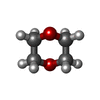Entry Database : PDB / ID : 2g54Title Crystal structure of Zn-bound human insulin-degrading enzyme in complex with insulin B chain Insulin-degrading enzyme insulin Keywords / Function / homology Function Domain/homology Component
/ / / / / / / / / / / / / / / / / / / / / / / / / / / / / / / / / / / / / / / / / / / / / / / / / / / / / / / / / / / / / / / / / / / / / / / / / / / / / / / / / / / / / / / / / / / / / / / / / / / / / / / / / / / / / / / / / / / / / / / / / / / / / / / / / / / / / / / / / / / / Biological species Homo sapiens (human)Method / / / Resolution : 2.25 Å Authors Shen, Y. / Tang, W.-J. Journal : Nature / Year : 2006Title : Structures of human insulin-degrading enzyme reveal a new substrate recognition mechanism.Authors : Shen, Y. / Joachimiak, A. / Rosner, M.R. / Tang, W.J. History Deposition Feb 22, 2006 Deposition site / Processing site Revision 1.0 Oct 24, 2006 Provider / Type Revision 1.1 May 1, 2008 Group Revision 1.2 Jul 13, 2011 Group Revision 1.3 Oct 20, 2021 Group / Derived calculationsCategory database_2 / struct_conn ... database_2 / struct_conn / struct_ref_seq_dif / struct_site Item _database_2.pdbx_DOI / _database_2.pdbx_database_accession ... _database_2.pdbx_DOI / _database_2.pdbx_database_accession / _struct_conn.pdbx_dist_value / _struct_conn.ptnr1_auth_asym_id / _struct_conn.ptnr1_auth_comp_id / _struct_conn.ptnr1_auth_seq_id / _struct_conn.ptnr1_label_asym_id / _struct_conn.ptnr1_label_atom_id / _struct_conn.ptnr1_label_comp_id / _struct_conn.ptnr1_label_seq_id / _struct_conn.ptnr2_auth_asym_id / _struct_conn.ptnr2_auth_comp_id / _struct_conn.ptnr2_auth_seq_id / _struct_conn.ptnr2_label_asym_id / _struct_conn.ptnr2_label_atom_id / _struct_conn.ptnr2_label_comp_id / _struct_conn.ptnr2_label_seq_id / _struct_ref_seq_dif.details / _struct_site.pdbx_auth_asym_id / _struct_site.pdbx_auth_comp_id / _struct_site.pdbx_auth_seq_id Revision 1.4 Feb 14, 2024 Group / Category / chem_comp_bond
Show all Show less
 Yorodumi
Yorodumi Open data
Open data Basic information
Basic information Components
Components Keywords
Keywords Function and homology information
Function and homology information Homo sapiens (human)
Homo sapiens (human) X-RAY DIFFRACTION /
X-RAY DIFFRACTION /  SYNCHROTRON /
SYNCHROTRON /  SAD / Resolution: 2.25 Å
SAD / Resolution: 2.25 Å  Authors
Authors Citation
Citation Journal: Nature / Year: 2006
Journal: Nature / Year: 2006 Structure visualization
Structure visualization Molmil
Molmil Jmol/JSmol
Jmol/JSmol Downloads & links
Downloads & links Download
Download 2g54.cif.gz
2g54.cif.gz PDBx/mmCIF format
PDBx/mmCIF format pdb2g54.ent.gz
pdb2g54.ent.gz PDB format
PDB format 2g54.json.gz
2g54.json.gz PDBx/mmJSON format
PDBx/mmJSON format Other downloads
Other downloads 2g54_validation.pdf.gz
2g54_validation.pdf.gz wwPDB validaton report
wwPDB validaton report 2g54_full_validation.pdf.gz
2g54_full_validation.pdf.gz 2g54_validation.xml.gz
2g54_validation.xml.gz 2g54_validation.cif.gz
2g54_validation.cif.gz https://data.pdbj.org/pub/pdb/validation_reports/g5/2g54
https://data.pdbj.org/pub/pdb/validation_reports/g5/2g54 ftp://data.pdbj.org/pub/pdb/validation_reports/g5/2g54
ftp://data.pdbj.org/pub/pdb/validation_reports/g5/2g54 Links
Links Assembly
Assembly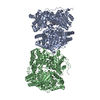

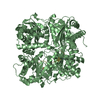
 Components
Components Homo sapiens (human) / Gene: IDE / Production host:
Homo sapiens (human) / Gene: IDE / Production host: 
 X-RAY DIFFRACTION / Number of used crystals: 1
X-RAY DIFFRACTION / Number of used crystals: 1  Sample preparation
Sample preparation SYNCHROTRON / Site:
SYNCHROTRON / Site:  APS
APS  / Beamline: 14-BM-C / Wavelength: 0.9 Å
/ Beamline: 14-BM-C / Wavelength: 0.9 Å Processing
Processing SAD / Resolution: 2.25→28.03 Å / Rfactor Rfree error: 0.002 / Data cutoff high absF: 142998.05 / Data cutoff low absF: 0 / Isotropic thermal model: RESTRAINED / Cross valid method: THROUGHOUT / σ(F): 0
SAD / Resolution: 2.25→28.03 Å / Rfactor Rfree error: 0.002 / Data cutoff high absF: 142998.05 / Data cutoff low absF: 0 / Isotropic thermal model: RESTRAINED / Cross valid method: THROUGHOUT / σ(F): 0  Movie
Movie Controller
Controller






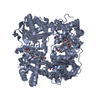
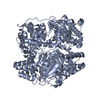

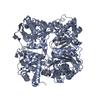

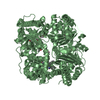
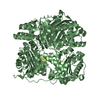
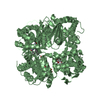

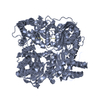
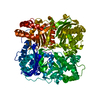
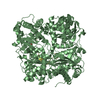
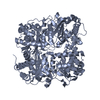
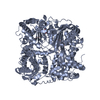
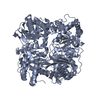

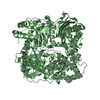
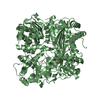
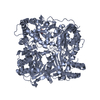
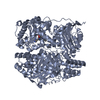
 PDBj
PDBj





















